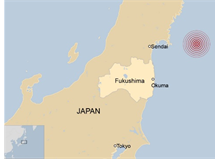

23rd August 2023 (8 Topics)
Context
Japan is gearing up to release the treated radioactive water from the tsunami-hit Fukushima nuclear plant into the Pacific Ocean, despite opposition.
Background
- In 2011, a tsunami triggered by a magnitude 9.0 earthquake flooded three reactors of the Fukushima Daiichi Nuclear Power Plant.
- The event is regarded as the world's worst nuclear disaster since Chernobyl.
- Shortly after, authorities set up an exclusion zone which continued to be expanded as radiation leaked from the plant, forcing more than 150,000 people to evacuate from the area.
Key-highlights
- Some 1.34 million tonnes of water - enough to fill 500 Olympic-size pools - have accumulated since the 2011 tsunami destroyed the plant.
- The water will be released over 30 years after being filtered and diluted.
- As per Japan, the water is a necessary step in the lengthy and costly process of decommissioning the plant, which sits on the country's east coast, about 220km (137 miles) north-east of the capital Tokyo.
- The U.N.’s nuclear watchdog has endorsed the move.
|
Where is the plant?
|
How safe is the water?
- The water has been filtered to remove more than 60 radioactive substances.
- But the water will not be entirely radiation-free as it will still contain tritium and carbon-14- radioactive isotopes of hydrogen and carbon that cannot be easily removed from water.
More Articles



